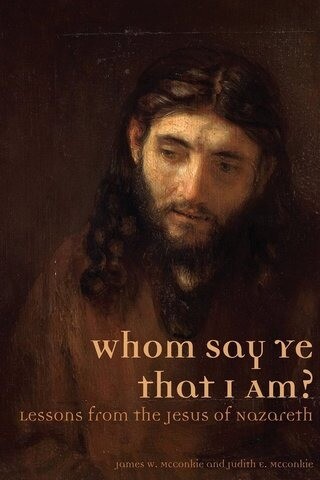For members of The Church of Jesus Christ of Latter-day Saints, it is a paradox that in the four Gospels it does not appear that Jesus spoke about eternal marriage. The idea that marriage in the temple is the ultimate sacrament simply cannot be found. However, this teaching is so central to our understanding of what it means to be saved that it seems like an almost insurmountable contradiction between what Jesus did or did not teach during His earthly ministry and what was clearly revealed to Joseph Smith about eternal marriage.
For us, this dilemma was compounded when we read in the 22nd chapter of Matthew about a test question on marriage in the next life. It came up in a debate between Jesus and the Sadducees. In an attempt to challenge Jesus’s legitimacy as a famous and trusted rabbi, the Sadducees asked if a childless widow married her dead husband’s six brothers in succession after each of their deaths, whose wife will she have been in and after the Resurrection? His answer spoke rather narrowly to marriage customs, a first-born son’s inheritance rights, and even the Sadducees’ lack of belief in a life after death. The King James translation reads that He said, “For in the resurrection they neither marry, nor are given in marriage, but are as the angels of God in heaven” (Matt. 22:30 KJV).
Other, newer translations clarify the ambiguity of His answer. Nonetheless, here is the great difficulty we spent some time considering: the idea that in the next life all mankind will be like “the angels” seems to contradict the Prophet Joseph Smith’s teachings that marriage and family relationships continue in and are indispensable to the next part of our eternal lives.
We concluded that one way for members of the Church to solve this paradox is to point out that a strict reading of Jesus’ statement recorded in Matthew is true. There is no marriage in the next life because God has revealed that marriages in heaven are to be solemnized in temples on earth by proxy. In addition, Church members also point to the well-known article of our faith that “we believe the Bible to be the word of God as far as it is translated correctly” (PofGP 1:8). That means that some ideas in the Bible have been omitted, obscured, or misunderstood when taken out of context, or even tampered with over time.
However, another way to approach this problem is to look beyond the four Gospels to other Christian writings that as a matter of historical accident were never canonized or widely recognized. Cyril of Jerusalem (313-386 AD), a venerated saint in the Roman Catholic and Eastern Orthodox traditions, wrote Lectures on the Ordinance. In it he itemized the instructions called “mysteries” given to initiates into the secret rituals of the Church, instructions limited to an inner circle of the Christian faithful. These rites involved purification rituals, prayer circles, and other sacred ordinances. In addition to Cyril’s Lectures, The Gospel of Philip, first published in an English translation in 1959, explained how marriage brought Christians into a special relationship with God. It dates back to at least 400 AD, and probably back even further to the second century. The Gospel of Philip speaks of five rites in ascending order: baptism, chrism (gift of the Spirit), Eucharist (sacrament), redemption, and the bridal chamber (marriage). Furthermore, The Gospel of Philip describes marriage relationships in heaven, the purpose of which is to “beget” new life, a teaching reminiscent of Joseph Smith’s revelations.
We cite these early sources because it appears to us that their authors’ belief was that marriage was one of the essential, key “mysteries” explicitly taught by Jesus to His disciples.
As members of the Church we are blessed to have “further light and knowledge” through modern scripture. In fact, the Book of Mormon explains that some “plain and precious things” were omitted from the Bible (1 Ne. 13:29). Of interest to us in this context is the idea Nephi taught when he referred to other books that were “sealed up to come forth in their purity . . . in the due time of the Lord” (1 Ne. 14:26).
In reference to those other religious texts that are not in our canon, Joseph Smith asked the Lord about the Apocrypha. The Lord said, “There are many things contained therein that are true, and it is mostly translated correctly” (DC 91:2). The Lord’s endorsement of the Apocrypha in the Doctrine and Covenants by extension then invites members of the Church to read other ancient records in the same spirit we would read the Apocrypha—that is, with the aid of the Spirit of the Lord. And in the case of those ancient finds like The Gospel of Philip and Cyril’s Lectures, information about the significance of marriage in this life and the implications of eternal marriage in the life to come help us answer the paradox we found in the four Gospels.
James and Judith McConkie are the authors of Whom Say Ye That I Am: Lessons from the Jesus of Nazareth, published by Kofford Books. It is available at Deseret Book stores and online and through barnesandnoble.com and amazon.com. This is the first in a series of essays about the book. Watch for more on ldsliving.com.



